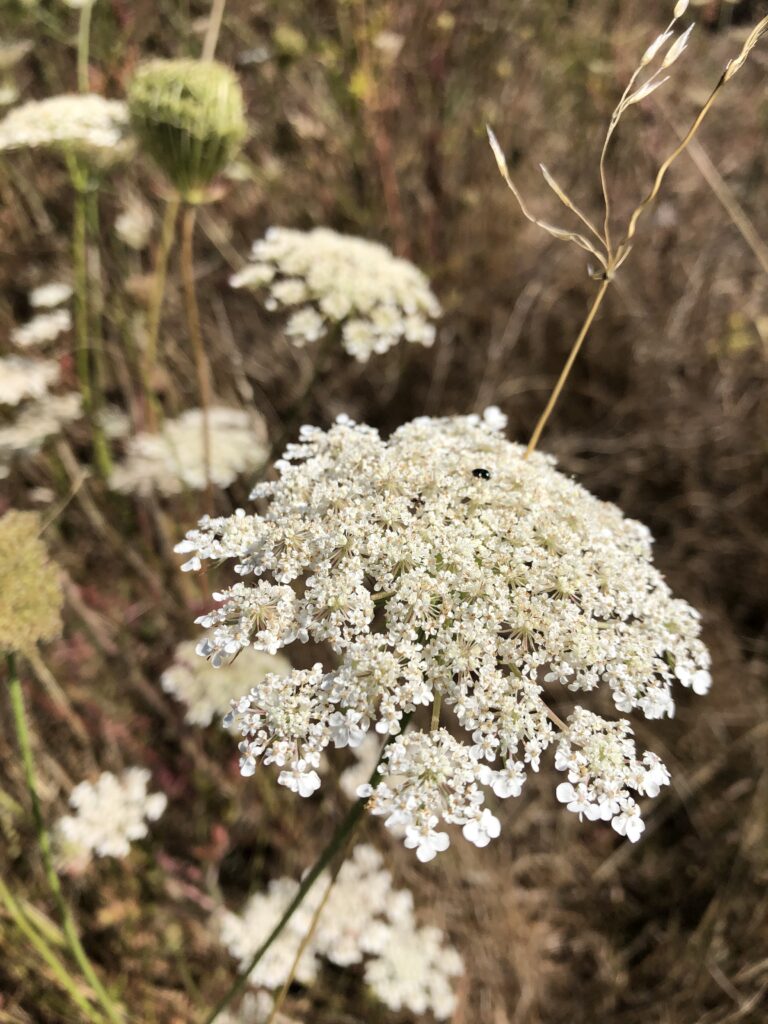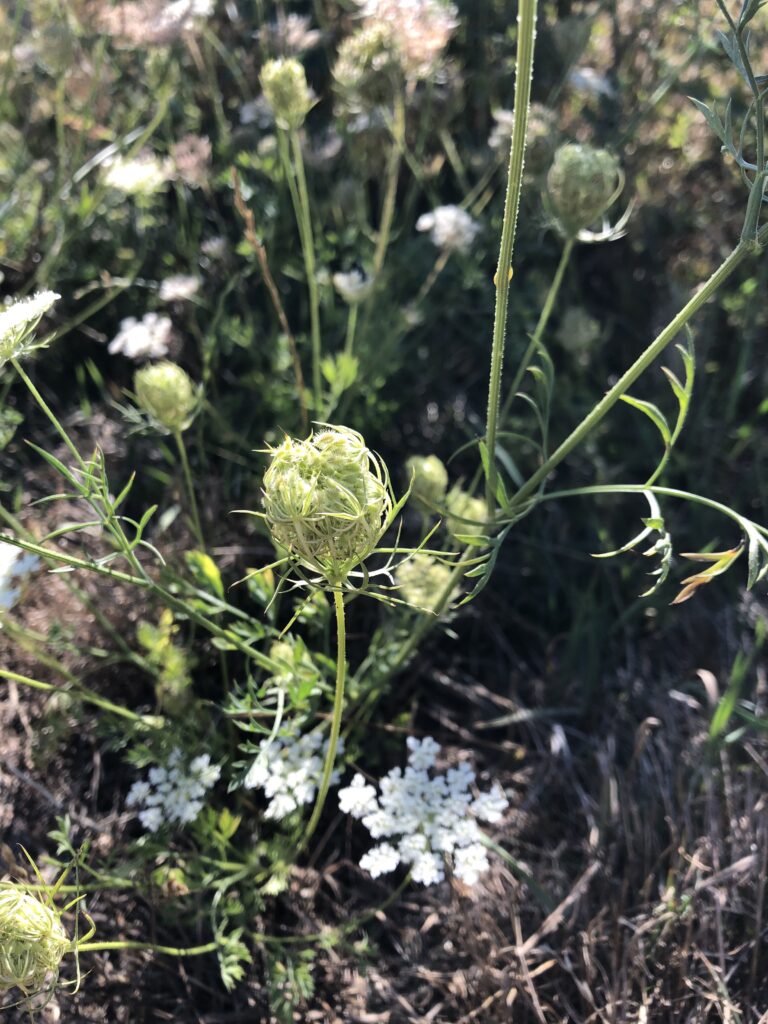Queen Anne’s Lace/Wild Carrot (Daucus carota)

Queen Anne’s lace is an invasive species that was introduced to North America from Europe. It has fine, lacy leaves and thick, hairy stems. Queen Anne’s lace blooms throughout the summer and fall, and produces flat-topped clusters of small, white flowers. Often, the central flower of the cluster is red or pink.

Like cultivated carrots, Queen Anne’s lace is a biennial plant, which means that it completes its life cycle in two years. Queen Anne’s lace often grows in frequently disturbed habitats, such as roadsides and agricultural land. It grows best in dry soil, and is often found in grassland areas around Vancouver Island.

In agriculture, Queen Anne’s lace is often considered to be a “beneficial weed”. It can be problematic if it spreads too quickly through a field, but it can also be used as a companion plant for several crops, including tomatoes and lettuce. It can also be used to attract pollinators to an area. However, in natural ecosystems, Queen Anne’s lace is problematic because it outcompetes native plant species.
For more information, visit E-Flora BC or the BC Species and Ecosystems Explorer.


